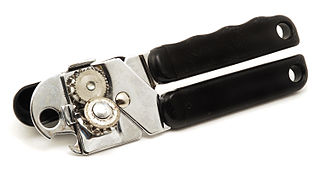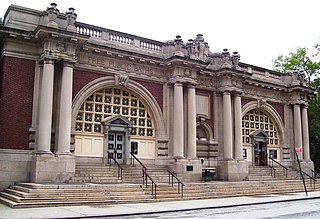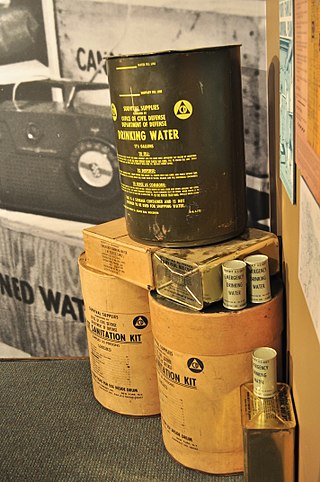
A shower beer is a beer consumed while taking a shower. While the concept is not complex, it did not become a cultural trend until the first decade of the 2000s. [1]

A shower beer is a beer consumed while taking a shower. While the concept is not complex, it did not become a cultural trend until the first decade of the 2000s. [1]
Beer is one of the oldest alcoholic drinks in the world, but beer in bottles, and certainly beer in cans which are safer for use in a shower, is not. Reliable bottled beer did not develop until late in the 1800s. [2] In the United States, beer cans first appeared in 1935 after the end of Prohibition. Early cans were heavy and difficult to open. Lighter aluminum cans began to spread during the 1960s, and the first easy-open tab type was introduced in 1962. By 1969, sales of canned beer exceeded bottled beer for the first time. [3] As of 2009, half of the revenue of the United States' beer market cames from cans, with craft beer makers also moving to canned offerings. [4]
Though William Feetham is widely credited for creating the first mechanical shower in 1767, indoor plumbing and indoor home showers are a much more recent development. Showers became available in some homes in the United States in the 1920s, [5] but did not start becoming a standard feature in newly-built American homes until the 1950s. [6] [7] Outside the United States, the adoption of showers has been even slower. For example, only 36 percent of households in Great Britain had a home shower by 1988. [8]
With easily-openable aluminum beer cans in abundance, and indoor showers common and becoming the preferred form of bathing, there is some evidence that the idea of having a "shower beer" as a purposeful act did exist by the 1980s in the United States, but no contemporary news coverage of it seems to exist. [9] [10] To the extent people starting drinking in the shower prior to going out (pregaming) in the mid-1980s, this is also when the national drinking age in the United States was raised to 21. [11]
However, aside from anecdotal stories, there is no evidence that the idea of a "shower beer" started spreading as a cultural trend in the United States until the mid-2000s. The term "shower beer" only first spiked in Google search results in 2006, and it has continued to grow since that time. [12] The Urban Dictionary entry for shower beer was created in 2004. [9] [12] The first products sold to support drinking a beer in the shower seem to have first appeared around 2006, such as the "shower beer buddy", [9] and numerous other products have appeared since. [13] Breweries also market some beers specifically as good "shower beers". [9] [14] [15]
A number of stories about the practice started being posted on the Internet around 2012. [12] The showerbeer subreddit on Reddit was created in 2011, and had more than 100,000 subscribers as of 2019. The site features selfies of people (with varying degrees of nudity displayed) enjoying a shower beer. [12] [16]
One noted frequent case for having a shower beer is during "pregaming" (a term that developed in 1990s) before going out for a night on the town. The increase of the legal drinking age in the United States to 21 in the 1980s has been blamed for the popularity of pregaming, and may have promoted the development of shower beers on college campuses. [11] However, other common occasions for having a shower beer include after a long day at work or after doing strenuous outside activity. [9] [17] Actress Margot Robbie shared her enjoyment of "beer showers" after a long work day in a 2016 interview. [18]
To avoid glass breakage, it is often recommended that a shower beer be a canned beer. [1]

Hygiene is a set of practices performed to preserve health. According to the World Health Organization (WHO), "Hygiene refers to conditions and practices that help to maintain health and prevent the spread of diseases." Personal hygiene refers to maintaining the body's cleanliness. Hygiene activities can be grouped into the following: home and everyday hygiene, personal hygiene, medical hygiene, sleep hygiene, and food hygiene. Home and every day hygiene includes hand washing, respiratory hygiene, food hygiene at home, hygiene in the kitchen, hygiene in the bathroom, laundry hygiene, and medical hygiene at home.

A bathroom, restroom or washroom is a room, typically in a home or other residential building, that contains either a bathtub or a shower. The inclusion of a wash basin is common. In parts of the world e.g. India, a toilet is typically included in the bathroom; in others, the toilet is typically given a dedicated room separate from the one allocated for personal hygiene activities. In the United States, the word 'bathroom' is often used to refer to any room that contains a toilet, regardless of the inclusion of a bath or shower.

Sentō (銭湯) is a type of Japanese communal bathhouse where customers pay for entrance. Traditionally these bathhouses have been quite utilitarian, with a tall barrier separating the sexes within one large room, a minimum of lined-up faucets on both sides, and a single large bath for the already washed bathers to sit in among others. Since the second half of the 20th century, these communal bathhouses have been decreasing in numbers as more and more Japanese residences now have baths. Some Japanese find social importance in going to public baths, out of the theory that physical proximity/intimacy brings emotional intimacy, which is termed skinship in pseudo-English Japanese. Others go to a sentō because they live in a small housing facility without a private bath or to enjoy bathing in a spacious room and to relax in saunas or jet baths that often accompany new or renovated sentōs.

A drink can is a metal container designed to hold a fixed portion of liquid such as carbonated soft drinks, alcoholic drinks, fruit juices, teas, herbal teas, energy drinks, etc. Drink cans are made of aluminum or tin-plated steel. Worldwide production for all drink cans is approximately 370 billion cans per year.

An Aluminum can is a single-use container for packaging made primarily of aluminum. It is commonly used for food and beverages such as olive and soup but also for products such as oil, chemicals, and other liquids. Global production is 180 billion annually and constitutes the largest single use of aluminum globally.

A shower is a place in which a person bathes under a spray of typically warm or hot water. Indoors, there is a drain in the floor. Most showers have temperature, spray pressure and adjustable showerhead nozzle. The simplest showers have a swivelling nozzle aiming down on the user, while more complex showers have a showerhead connected to a hose that has a mounting bracket. This allows the showerer to hold the showerhead by hand to spray the water onto different parts of their body. A shower can be installed in a small shower stall or bathtub with a plastic shower curtain or door. Showering is common due to the efficiency of using it compared with a bathtub. Its use in hygiene is, therefore, common practice.

A reusable bottle is a bottle that can be reused, as in the case as by the original bottler or by end-use consumers. Reusable bottles have grown in popularity by consumers for both environmental and health safety reasons. Reusable bottles are one example of reusable packaging.

A can opener or tin opener is a mechanical device used to open metal tin cans. Although preservation of food using tin cans had been practiced since at least 1772 in the Netherlands, the first can openers were not patented until 1855 in England and 1858 in the United States. These early openers were basically variations of a knife, though the 1855 design continues to be produced.

Bathing is the act of washing the body, usually with water, or the immersion of the body in water. It may be for personal hygiene, religious ritual or therapeutic purposes. By analogy, especially as a recreational activity, the term is also applied to sun bathing and sea bathing.

Public baths originated when most people in population centers did not have access to private bathing facilities. Though termed "public", they have often been restricted according to gender, religious affiliation, personal membership, and other criteria.

A spa is a location where mineral-rich spring water is used to give medicinal baths. Spa towns or spa resorts typically offer various health treatments, which are also known as balneotherapy. The belief in the curative powers of mineral waters goes back to prehistoric times. Such practices have been popular worldwide, but are especially widespread in Europe and Japan. Day spas and medspas are also quite popular, and offer various personal care treatments.

History of beer in Mexico dates from the Spanish conquest of the Aztec Empire. While Mesoamerican cultures knew of fermented alcoholic beverages, including a corn beer, long before the 16th century, European style beer brewed with barley was introduced with the Spanish invasion soon after Hernán Cortés's arrival. Production of this beer here was limited during the colonial period due to the lack of materials and severe restrictions and taxes placed on the product by Spanish authorities. After the Mexican War of Independence, these restrictions disappeared, and the industry was permitted to develop. Furthermore, the arrival of German immigrants during the ephemeral Second Mexican Empire of elected Maximilian I of Mexico, born an Austrian archduke, in the 19th century provided the impetus for the opening of many breweries in various parts of the country.

Chūhai, an abbreviation of "shōchū highball" (焼酎ハイボール), is an alcoholic drink originating from Japan.
Ready to drink packaged beverages are those sold in a prepared form, ready for consumption. Examples include iced tea and alcopops.

There are ten in the United States of America with container deposit legislation, popularly called "bottle bills" after the Oregon Bottle Bill, the first such legislation that was passed.

Canned water is drinking water, including spring water, artesian spring water, purified water, carbonated water and mineral water, packaged in beverage cans made of aluminium or tin-plated steel.
Pregaming is the process of getting drunk prior to going out socializing, typically done by college students and young adults in a manner as cost-efficient as possible, with hard liquor and cheap beer consumed while in group.

Residential water use includes all indoor and outdoor uses of drinking quality water at single-family and multifamily dwellings. These uses include a number of defined purposes such as flushing toilets, washing clothes and dishes, showering and bathing, drinking, food preparation, watering lawns and gardens, and maintaining swimming pools. Some of these end uses are detectable while others are more difficult to gauge.

The history of bottle recycling in the United States has been characterized by four distinct stages. In the first stage, during the late 18th century and early 19th century, most bottles were reused or returned. When bottles were mass-produced, people started throwing them out, which led to the introduction of bottle deposits. However, during the second stage, after World War II, consumption patterns changed and nonreturnable containers became popular, which littered the environment. Some states implemented "bottle bills" that instituted deposits. The beverage-container industry first implemented private recycling programs and then pushed for municipal curbside recycling as an alternative to "bottle bills". More recently, PET bottles have largely replaced other materials. The United States used to be the front-runner when it came to recycling PET, but European countries have since outpaced the US.